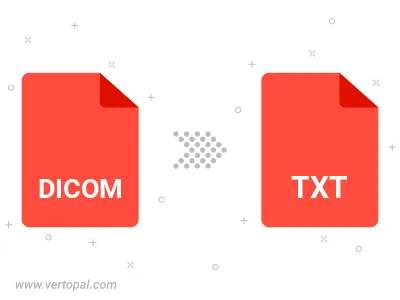Convert DICOM to TXT UILTABLE
Convert DICOM images to TXT UILTABLE format, edit and optimize images online and free.

DICOM, or Digital Imaging and Communications in Medicine, is a standardized file format used in the field of medical imaging. It facilitates the storage, exchange, and transmission of medical images and related information between devices from different manufacturers, ensuring interoperability in healthcare environments. Originating from efforts by the National Electrical Manufacturers Association (NEMA) and the American College of Radiology (ACR) in the 1980s, DICOM's evolution has played a crucial role in the development of advanced medical imaging technologies and systems.
The TXT file extension, associated with the X-Motif UIL Table, stands for Text. This format is used to define user interface elements like menus and buttons within the X Window System. Initially developed by The Open Group, the plain text format allows developers to outline the UI components and their configurations. These files are then compiled into a format that can be utilized by the Motif Resource Management functions, streamlining the creation and management of graphical interfaces.
Click Choose File and pick the DICOM image required for conversion.
Adjust DICOM to TXT UILTABLE settings with tools, then press Convert.
Allow the system to complete the TXT UILTABLE conversion, then download your file.

To change DICOM format to TXT UILTABLE, upload your DICOM file to proceed to the preview page. Use any available tools if you want to edit and manipulate your DICOM file. Click on the convert button and wait for the convert to complete. Download the converted TXT UILTABLE file afterward.
Vertopal CLI enables structured conversion from DICOM image to TXT UILTABLE image.
cd into the DICOM file directory or provide the path.